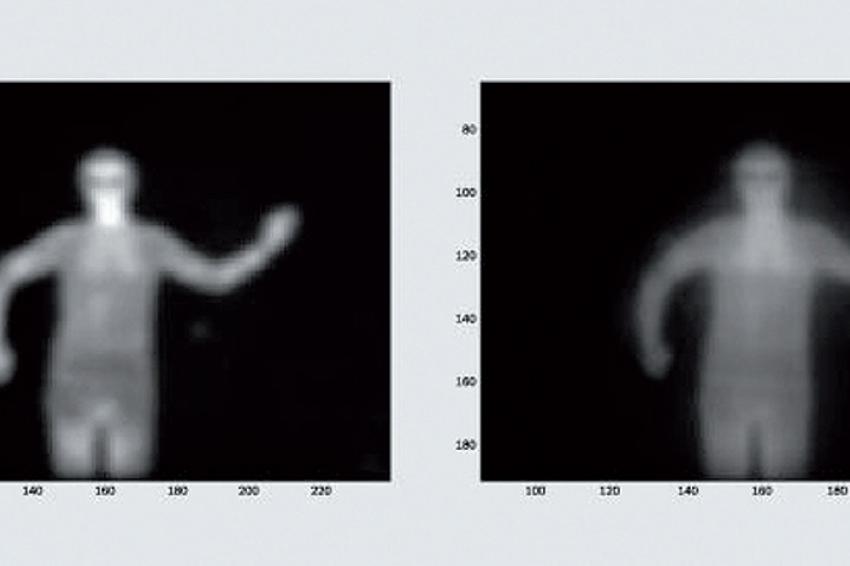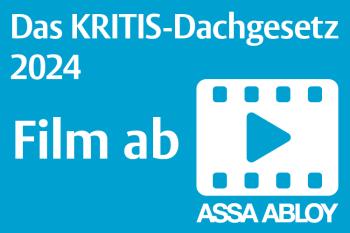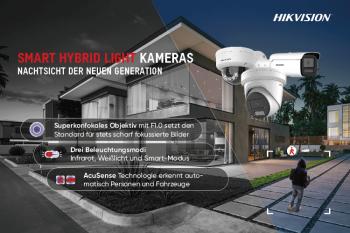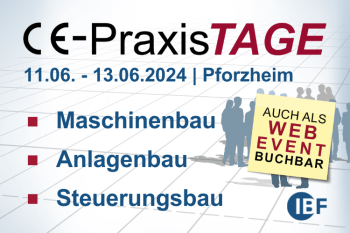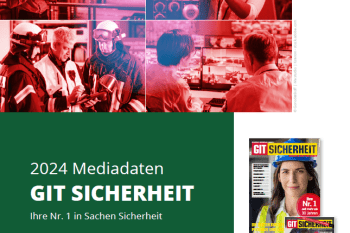Bosch Security Systems: Sensor Data Fusion
11.06.2012 - Bosch Security Systems: Sensor Data Fusion. The ultimate in intrusion detection is the balance between rapidly and accurately responding to the presence of an unauthorised human wi...
Bosch Security Systems: Sensor Data Fusion. The ultimate in intrusion detection is the balance between rapidly and accurately responding to the presence of an unauthorised human without the cost and time inefficiencies of false alarms. Numerous security systems manufacturers strive to develop intrusion detectors that provide optimal detection and eliminate false alarms. With its new range of Professional Series intrusion detectors with features that enhance ease of installation and level of security, Bosch Security Systems comes close to achieving this.
The Bosch range of intrusion detectors provides a wide choice of models to suit the requirements of any type or size of application. In early 2005, Bosch introduced its Blue Line family of passive infrared (PIR) and microwave detectors. Aimed at the high-end residential and mid-range commercial markets, the Blue Line detectors employ Bosch’s proprietary First Step Processing (FSP) and Tritech technologies and provide unique features that add flexibility and ease of use for the installer.
FSP enables virtually instant response to human targets. Up until recently, Tritech provided the highest possible level of detection reliability and false alarm immunity in a microwave motion detector due to its proprietary signal processing algorithms. This is now taken to the next level by the Bosch Professional Series: This family of commercial and industrial intrusion detectors introduces several innovative technologies, chief of which are Sensor Data Fusion (SDF) and the Trifocus optical system.
The first models of Professional Series were brought to the global security market in August 2006.
Always in Focus
Trifocus optics is a new, patented technology that employs three precision-engineered lenses for long, medium and short-range detection in combination with two separate PIR detector elements. Trifocus ensures maximum optical gain with virtually noise-free signal quality, providing the basis for the Sensor Data Fusion digital signal processing.
The three focal lengths are optimized for the different detection ranges to be covered by the detector: Short-range detection is provided by a short focal length ‘lookdown’ lens at the base of the unit and ensures seamless ‘to-the-wall’ coverage. A medium focal length lens covers intermediate distances, and a long focal length lens is optimized for coverage up to the rated range of the detector.The use of three individual lenses also effectively eliminates coverage gaps between the detector zones. It provides a very high density of detection zones, i.e., 86 zones distributed over 11 solid ‘curtains’ of detection. This design approach allows for adjustmentfree installation, thus eliminating one of the most common installation errors of conventional motion detectors: Regardless of mounting height anywhere between 2 and 3 m or room size up to the rated range, no adjustments are necessary to provide optimum protection.
A simple dipswitch allows a conversion of the detector from its rated range to a true medium-range device with 7.5 m coverage. The installer can carry less inventory, and at the same time make no compromises that usually arise when longerrange motion detectors are used in small areas. Trifocus’ enhanced optical gain can be visualized by comparing with the ‘f’ aperture setting of a camera, i.e., the ratio of the focal length of the lens to its diameter: If an individual lens element is too small relative to its focal length, the level of IR energy captured by this lens will not be high enough to produce a usable signal, much as a low quality camera lens performs poorly under low light conditions.
Conventional detectors with only one lens or mirror and one PIR sensor that may need to cover a range from zero to, say, 15 m have limitations that prevent them from covering all distances with the same level of signal quality. This often leads to decreasing performance at distances close to the rated range, or large coverage gaps. In the Professional Series, the overall optical gain is approximately doubled compared to state of the art detectors, thus allowing optimal coverage of all distances up to 18 m.
Triple Lens Optics
In the past, the manufacturing of high-quality PIR lenses was more difficult than that of mirrors. Therefore, mirror optics used to be the preferred choice for higher-end applications. Bosch has now overcome this limitation with a new and proprietary lens element design providing increased optical efficiency. Combined with a new precision manufacturing process, this gives an overall optical quality that surpasses the best mirror-based designs in today’s industry.
Therefore, for the first time, it became possible to take full advantage of the inherent strengths of lens-based detectors over their mirror- based counterparts: The typically higher pattern density and seamless coverage of a lensbased design is now accessible to the high-end intrusion market, further reducing the chances of an intruder to escape detection. Moreover, the Trifocus lenses are part of the detector enclosure, which is sealed.
This offers the highest level of robustness of construction and accurate, fixed positioning of the lenses to avoid misalignment, as well as immunity against insects entering the unit and possibly triggering a false alarm.
Taking Sensible Decisions Autonomously
In existing PIR/microwave and other multi-technology motion detectors, alarm decisions are derived by each of the technologies independently. If both their results agree on the probable presence of an intruder, an alarm will be given. While this approach of checks and balance leads to improved false alarm immunity, simply building multiple sensor elements in one detector does nothing to increase its detection effectiveness.
Sensor Data Fusion now addresses this weakness by intelligently co-processing the signals from not only one microwave and one PIR sensor, but from up to five independent detectors: two PIR sensors, a room temperature sensor, a white light sensor and – in some models – a microwave sensor.
The data from all sensors are simultaneously analysed by a proprietary digital signal possessing algorithm, embedded in a high-performance microcontroller. The alarm decision is based on a complex algorithm that takes into account all information that has been combined on a low level by Sensor Data Fusion. This technology provides an improvement in catch performance by 35 per cent and a new level of false alarm immunity and responsiveness.
At the same time, it enables several new features and performance enhancements that are described below.
Giant Flies and Tiny Trucks
The new and patented range-adaptive microwave sensor feature addresses a commonly known weakness of microwave motion detectors: Their detection principle is based on the Doppler shift of an electromagnetic wave radiated by the detector and reflected back from the target. Hence, the signal level very much depends on the distance to the target due to the energy ‘dilution’ of the wave travelling forth and back. The detector sensitivity must be adjusted to reliably detect average human intruders at rated range.
Hence, very small objects in close proximity such as insects or birds will cause signals that mimic humans many meters away. On the other hand, remote objects that are strong microwave reflectors, such as a large vehicle, will cause signals that are indiscernible from those caused by humans within the rated range. This obviously leads to false alarm risks, which are only avoided in practice by relying on the PIR subsystem of the detector. Therefore, the overall performance will be reduced as a compromise has to be made between false alarm immunity and catch performance. With SDF,
Bosch’s Professional Series PIR/microwave models overcome this limitation. By simultaneously processing both PIR channels, as well as the microwave signal, the sensitivity of the microwave detector is continuously and automatically adjusted based on the target range information derived from the PIR subsystem. With this technology, a fly directly in front of the sensor will no longer appear as a human, nor will a truck 30 m away!
Active White Light Suppression
Immunity to false alarms triggered by strong white light sources shone onto a PIR detector is a requirement in all global security markets. Such light sources can be headlights of passing vehicles or, more significantly, a flashlight held by a burglar intentionally trying to trigger false alarms. Traditionally, there have been various methods of achieving a limited degree of white light immunity, including additional filters in front of the sensor, special dark mirror materials, or pigments in the detector lens.
All these approaches have the disadvantage that they also reduce the desired IR signal, thus compromising detection performance. At the same time, white light immunity is always limited to a certain maximum Lux rating, which in practice often cannot be ensured reliably throughout the production life of a given product.
Professional Series entirely eliminates these limitations and drawbacks by employing Sensor Data Fusion. SDF uses a dedicated white light sensor to detect and eliminate any signals coming from white light sources. This is achieved without impacting the PIR detection reliability, regardless of magnitude or temporal patterns of the white light.
Running Hot and Cold
Dynamic temperature compensation is an important factor in intrusion detector technology. A PIR sensor only produces a signal if it sees a temperature difference in the environment. The human body radiates IR energy that corresponds approximately to 36 degrees Celsius. If the ambient temperature is close to this temperature, e.g., due to tropical climate or excessive heating, there will be a low or no temperature difference seen by the detector.
Hence, no usable signal will be generated. It is common to achieve some level of temperature compensation by making PIR sensors more sensitive at higher ambient temperatures, or to even disable the PIR portion in dual detectors and only rely on the microwave subsystem. However, this results in over-sensitivity and thus increases the false alarm risk.
With SDF, Bosch provides dynamic temperature compensation that uniquely adjusts the temperature sensitivity around a certain critical range. As the ambient room temperature approaches that of the human body, the sensitivity automatically increases within a narrow range of a few degrees around human body temperature, thus allowing detection of subtle differences but avoiding false alarms at higher temperatures. In combination with the enhanced signal quality of the Trifocus optical system, this leads to a detection reliability at all temperatures and detection ranges that is unsurpassed in the industry.
Dr. Falk Herrmann
Contact:
Bosch GmbH, Ottobrunn, Germany
Tel.: +49 89 6290 1647
Fax: +49 89 6290 281647
emea.securitysystems@bosch.com
www.boschsecurity.com


